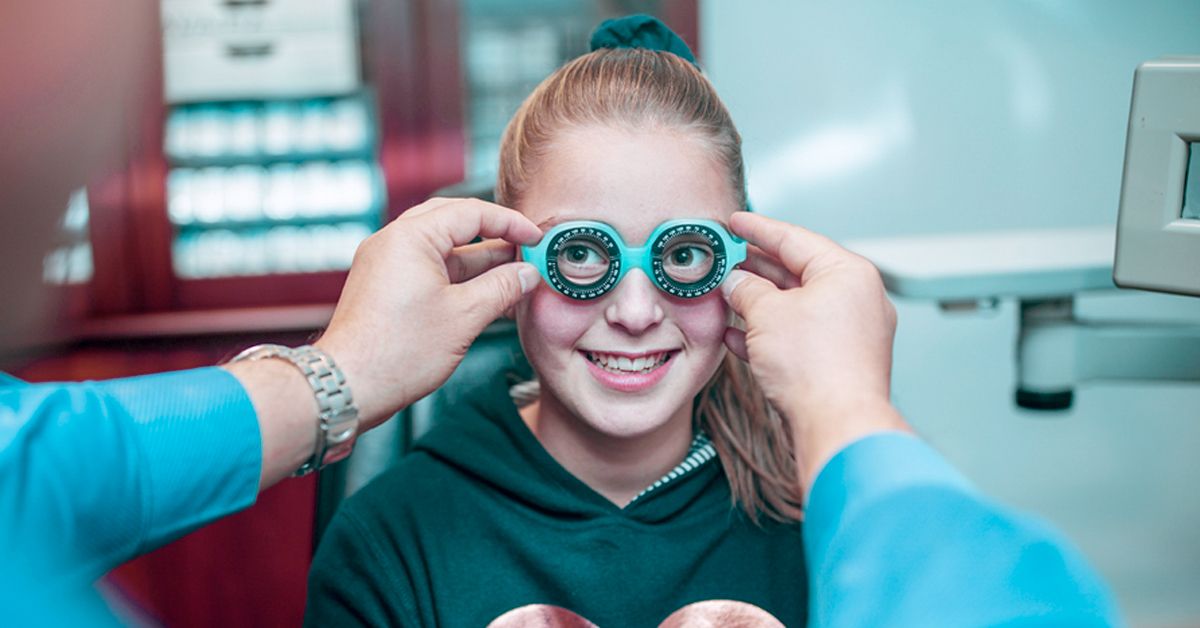Discover a Trusted Optometrist Chino for Family Eye Care Solutions
Discover a Trusted Optometrist Chino for Family Eye Care Solutions
Blog Article
Exploring the current Technological Innovations in Optometry and What They Mean for Optometrists
In the ever-evolving area of optometry, recent technical developments are reshaping just how experts approach eye treatment. From the accuracy of Optical Comprehensibility Tomography to the nuanced insights supplied by AI-driven diagnostic tools, these developments are setting new requirements in patient assessment and therapy. Teleoptometry is positioned to redefine ease of access, guaranteeing that knowledge goes beyond geographical limitations. As these advancements permeate the practice, eye doctors are encountered with the challenge of embracing these devices to boost individual results. Yet, the question stays: how will these technical changes redefine the roles and obligations within the profession?
Developments in Diagnostic Equipment
Advancing the area of optometry, advancements in analysis tools have changed the method eye care experts evaluate and detect visual impairments and eye conditions. The previous decade has observed significant technical innovations, making it possible for even more extensive and exact examinations. Optical Coherence Tomography (OCT), as an example, offers high-resolution cross-sectional pictures of the retina, enabling the early detection of diseases such as glaucoma and age-related macular deterioration. This non-invasive imaging method has actually come to be essential in contemporary optometric practice.
An additional trick technology is the intro of innovative corneal topography systems, which map the surface curvature of the cornea with accuracy. These tools are specifically helpful for fitting contact lenses and diagnosing corneal conditions. Digital retinal imaging has changed standard ophthalmoscopy, using comprehensive, breathtaking views of the retina that promote extensive aesthetic exams.
The development of wavefront aberrometry has actually likewise been essential, allowing the evaluation of refractive errors with unrivaled precision (Optometrist Chino). This technology assists in customizing restorative lenses and improving surgical outcomes for refractive surgical procedures. Collectively, these diagnostic developments empower optometrists to provide superior patient care, making certain early treatment and tailored treatment approaches, eventually boosting aesthetic health and wellness end results
AI in Patient Administration
Building on the foundation of sophisticated analysis devices, the unification of synthetic intelligence (AI) in person management stands for a transformative jump for optometry. AI systems are progressively used to enhance performance, precision, and personalization in individual care. By assessing substantial quantities of information, AI can determine patterns and predict potential ocular conditions, enabling optometrists to tailor treatments extra successfully. This ability is important in handling chronic eye illness such as glaucoma and diabetic retinopathy, where early discovery and constant surveillance are crucial.
In addition, AI-driven systems assist in streamlined client interactions and management processes. Automated organizing, virtual appointments, and individualized follow-up strategies not just improve person satisfaction however additionally enhance time monitoring for professionals. These systems can triage patients based upon the necessity of their problems, making certain that those in vital need receive prompt interest.
Furthermore, AI boosts decision-making by offering eye doctors with evidence-based suggestions and therapy paths. By integrating data from electronic health and wellness documents, AI devices supply insights that educate medical decisions, minimizing the danger of errors and boosting client outcomes. As AI continues to evolve, its duty in person management will likely broaden, reshaping the landscape of optometric treatment.
Breakthroughs in Retinal Imaging
In the realm of optometry, retinal imaging has witnessed impressive technical innovations that are improving diagnostic capacities and patient treatment. Technologies such as Optical Coherence Tomography (OCT) and fundus photography have transformed how optometrists imagine and assess the retina.
Boosted imaging methods like OCT angiography are more refining diagnostic accuracy. This view it now non-invasive method maps blood circulation in the retina, offering critical insights right into vascular health without the demand for color shots. Additionally, adaptive optics modern technology is being incorporated right into retinal imaging systems to remedy eye aberrations, providing unmatched photo quality. Such innovations assist in the identification of minute retinal adjustments that could symbolize illness progression.
Additionally, innovations in synthetic knowledge are enhancing retinal imaging by making it possible for automatic evaluation of large datasets. These systems aid optometrists in recognizing patterns a measure of pathology, thus improving analysis accuracy and performance. Jointly, these technologies are transforming retinal imaging right into a foundation of contemporary eye care, enhancing end results and broadening restorative opportunities.
Teleoptometry's Expanding Duty
Teleoptometry is progressively ending up being an important component of eye care, driven by developments in data and analysis tools. As optometry welcomes digital improvement, teleoptometry facilitates remote examinations, allowing optometrists to extend their services beyond standard boundaries. This is specifically helpful in rural and underserved areas where access to specialized eye treatment is commonly restricted. By leveraging high-resolution video conferencing and progressed retinal imaging, eye doctors can carry out thorough eye tests my link from afar, guaranteeing timely medical diagnosis and therapy.
The combination of expert system (AI) further boosts teleoptometry, enabling the evaluation of visual information and helping in the detection of ocular conditions such as glaucoma and diabetic person retinopathy. AI-powered formulas can quickly interpret intricate imaging information, supplying optometrists with valuable understandings that boost medical decision-making.
Additionally, teleoptometry sustains continuity of treatment through smooth combination with electronic wellness records (EHRs), allowing optometrists to preserve comprehensive patient histories. When consulting with various practitioners., this ensures that individuals receive tailored and regular treatment even.
Despite these advantages, obstacles continue to be, including making sure information safety and security and handling client expectations. Teleoptometry represents a substantial stride in the direction of more available, effective, and patient-centered eye care. As technology evolves, its role is poised to increase better.

Future Patterns in Eye Treatment
A myriad of innovative patterns is set to improve the future of eye care, driven by technical developments and the evolving requirements of patients. One substantial fad is the combination of expert system (AI) in diagnostics, which assures to improve the accuracy and performance of eye examinations. AI formulas can assess large quantities of information from retinal images, possibly finding conditions like diabetic retinopathy and glaucoma earlier than standard approaches.
Furthermore, personalized medication is getting traction in optometry, with genetic screening notifying customized treatment plans. This technique intends to optimize person outcomes by customizing treatments to individual genetic profiles. Wearable technology, such as clever call lenses, is likewise on the horizon, providing real-time surveillance of intraocular pressure or sugar degrees, thus supplying continuous insights into ocular and systemic health and wellness.
The adoption of increased reality (AR) and online truth (VIRTUAL REALITY) in training and individual education and learning is an additional emerging trend. These innovations supply immersive experiences that can improve understanding and abilities both for patients and click here now optometrists. As these fads develop, optometrists need to remain abreast of technical improvements to provide sophisticated care, guaranteeing better patient results and satisfaction in the dynamic landscape of eye treatment.
Final Thought

Collectively, these analysis advancements encourage eye doctors to supply premium patient treatment, guaranteeing early intervention and customized treatment approaches, inevitably improving aesthetic wellness results.

As these technologies proceed to evolve, eye doctors need to adjust and incorporate them into technique, ultimately maximizing process performance and raising the criterion of eye treatment supplied to clients.
Report this page